Ida Mae's Chris Turpin walks you through stellar new album Click Click Domino track-by-track
We take an in-depth look at the tones behind the husband-and-wife duo’s sophomore record, featuring guest spots from Marcus King and Greta Van Fleet's Jake Kiszka
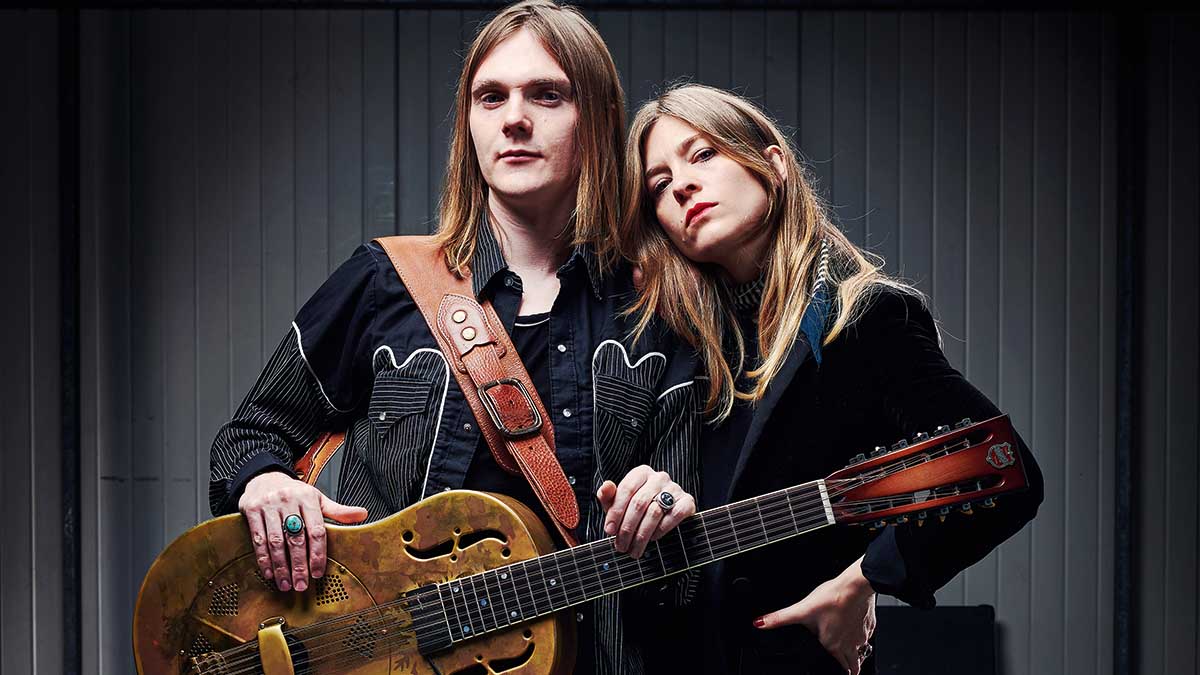
Ida Mae are currently on home turf having relocated from the US back to Blighty. But slide guitar phenomenon Chris Turpin and multi-instrumentalist Stephanie Jean stand poised to hit the road again.
The duo had chalked up thousands of miles on tour supporting the likes of Willie Nelson & Alison Krauss, Greta Van Fleet and Marcus King, but the pandemic suddenly forced them to isolate at their Nashville home-from-home where they immediately set about writing and recording Ida Mae’s new album, Click Click Domino.
“Everything except the acoustic drums, bass and strings was recorded at our place in Nashville,” Chris tells us. “Ethan Johns tracked the drums in his studio, and our bass player, Nick Pini, also tracked his parts separately. It’s a proper lockdown record!”
Ida Mae’s connection with famed producer/musician Ethan Johns (whose studio credits include Paul McCartney, Kings Of Leon and Laura Marling) began with their first record, 2019’s critically acclaimed Chasing Lights.
As news of the duo’s spellbinding live shows and Chris’s superlative British folk cum Delta blues-inspired guitar playing quickly spread, the pair were invited to Ethan’s studio to discuss their new project. Finding plenty of common ground in their creative approach to making music, they hit it off immediately.
Steph, a talented multi-instrumentalist, has also sporadically played keys in Ethan’s band Black Eyed Dogs, and by way of Ethan’s long-established studio relationship with Tom Jones was recently spotted duetting on piano with the Welsh singing legend for a string of prime-time TV shows on both sides of the Atlantic.
We were so inspired by the American landscape after travelling across the US for a few years – we toured over 40 states and covered hundreds of thousands of miles
With one foot in America and the other in England, Ida Mae certainly have some miles under their belt, but that’s nothing new for the pair who first met at university in the late Noughties while studying music. Armed with a demo recorded by PJ Harvey producer John Parish, they scored their first record deal together as alt-blues rockers Kill It Kid, and although the band defuncted in 2015, Chris and Steph haven’t stopped playing live together since.
Get The Pick Newsletter
All the latest guitar news, interviews, lessons, reviews, deals and more, direct to your inbox!
“With Ida Mae, we wanted to put the emphasis on our voices and our playing, without all the pomp and circumstance of a rock band,” states Chris. “When Steph and I started this, we wanted to strip everything to the bare bones, keeping it as raw and honest as possible.”
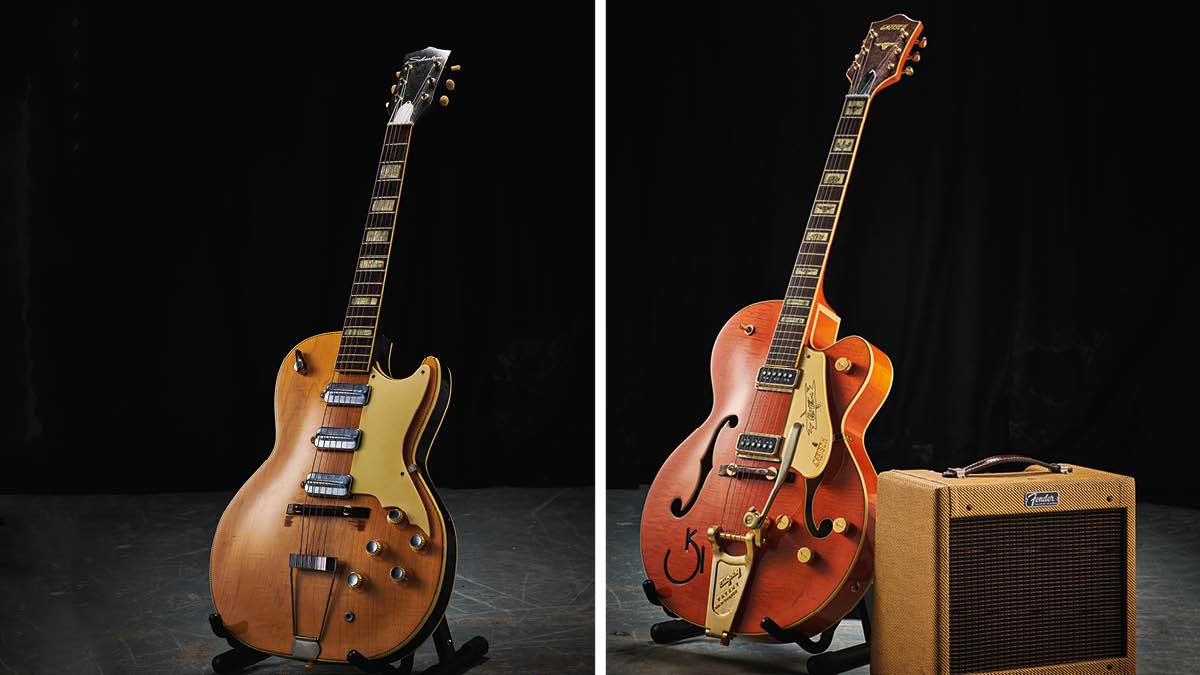
1. Road to Avalon
“Road To Avalon was nearly the title of the album. This song starts off with a banjolele and kalimba intro. The kalimba is going through the Zoom [MS-50G] pedal using a clip mic with a shit-ton of reverb. There’s also a cool Mellotron sound. The idea was to offset early American instruments with synthetic tones.
“We’ve also got some Native American drums on the album and other early instruments like the mandolinetto. We were so inspired by the American landscape after travelling across the US for a few years – we toured over 40 states and covered hundreds of thousands of miles. To me, this track sounds like the feeling of those long, weary and sometimes breathtakingly beautiful drives.”
2. Click Click Domino
“Click Click Domino is the title track and was recorded using my Gretsch [G6128T-53] Vintage Select ’53 Duo Jet with flat-wounds. I AB’d it with an original ’55 and ’56 and it sounded virtually identical. I also use an early 60s blonde Silvertone Speed Demon a lot on the record, which I string up with flat-wounds.
“A lot of the quintessential early rock ’n’ guitar sounds I love, like the Howlin’ Wolf and Bo Diddley Chess recordings, feature [DeArmond] pickups and flat-wound strings. So I thought I should try using flat-wounds and see how they feel. I think Dynasonics are some of the best pickups ever made and the combination with flat-wound strings is magical. Marcus King and I duel solos on this track.”
3. Line On The Page
“I used my single-cone National 12-string Style O resonator for this one. Years ago, I saw a picture of a [German] silver Style O from the 1930s and I asked National if they could make me a 12-string version. It has a raw brass body, and you’d think it would sound brash, but it’s actually a very warm sound. They etched straight onto the brass, which is pretty cool.
“Through an amp it reminds me of a church organ. It sounds huge. It feels like the sound is coming up from the floor. I prefer single-cone resonators. Tri-cones sound fantastic and have a more vocal quality, but they’re heavier. I think single-cones have just as much sustain and they generally have a more dynamic sound.”

4. Raining For You
“Raining For You also features my National 12-string quite heavily, which I tune to open D (D A D F# A D), otherwise known as Vestapol tuning. There are some nice strings and double bass by Nick Pini on this track, and some cool Roland Juno synth parts. I grew up listening to British rock ’n’ roll and then went back to country blues players like Reverend Gary Davis and Blind Willie McTell.
“At the same time, I was listening to Bert Jansch, John Renbourn and Davey Graham, and I realised they were kind of all doing the same thing – using a thumbed bass pattern up and down across strings. That’s what I’m doing on this track. But I’m trying to take it all somewhere new while keeping it simple.”
5. Little Liars
“This is one of our favourites. It was partly inspired by JJ Cale’s early records and John Martyn’s later records. It combines the sound of a 60s Ace Tone drum machine and an old Oscar Schmidt mandolinetto, which we tuned down one-and-a-half steps. We thought it would be cool to combine the sound of early American instruments with a drum machine and a synth.
“This was actually the demo, but we liked it so much we kept most of it and just added a few things. You can hear the Roland Juno synth come in just before Steph’s vocals start. We tried to make the Juno arpeggiator and the mandolinetto riff go in opposite directions. The slide guitar you can hear is my Silvertone Speed Demon.”
6. Deep River
“I used my old Waialae acoustic to track this one. It sounds really crusty mic’d up here, but live you get so much detail out of the LR Baggs M1 Active pickup. You can also hear the banjolele again on this track. This has another one of Marcus King’s insane solos on it, which he did in one pass.
“He was using my Duo Jet on the bridge pickup, the Z.Vex Box Of Rock, and the 1960 Tweed Champ. I think it’s one of the coolest tones ever. He was like, ‘Now this is a fucking tone,’ and I was like, ‘Yeah. It is a fucking tone.” [Laughs] But it was mainly coming out of his fingers. I think he’s one of the best guitar players around.”
7. Heartworn Traders
“I used a different National resonator on this track – one with a 14-fret neck and a steel body, which sounds brighter than brass. Again, we’re taking an instrument out of context, this time by using a resonator with a string quartet. It’s very simple – there aren’t many other tones. That resonator records really well with lots of sparkling high-end without it being too splat-y or harsh.
“The piano is all live, as are the vocals. We kept the vocals that are slightly out of tune, so people know it’s real. I think that’s quite important. We learned quickly from Ethan Johns when he produced our first album that the narrative of an unedited vocal take often creates greater emotional impact.”
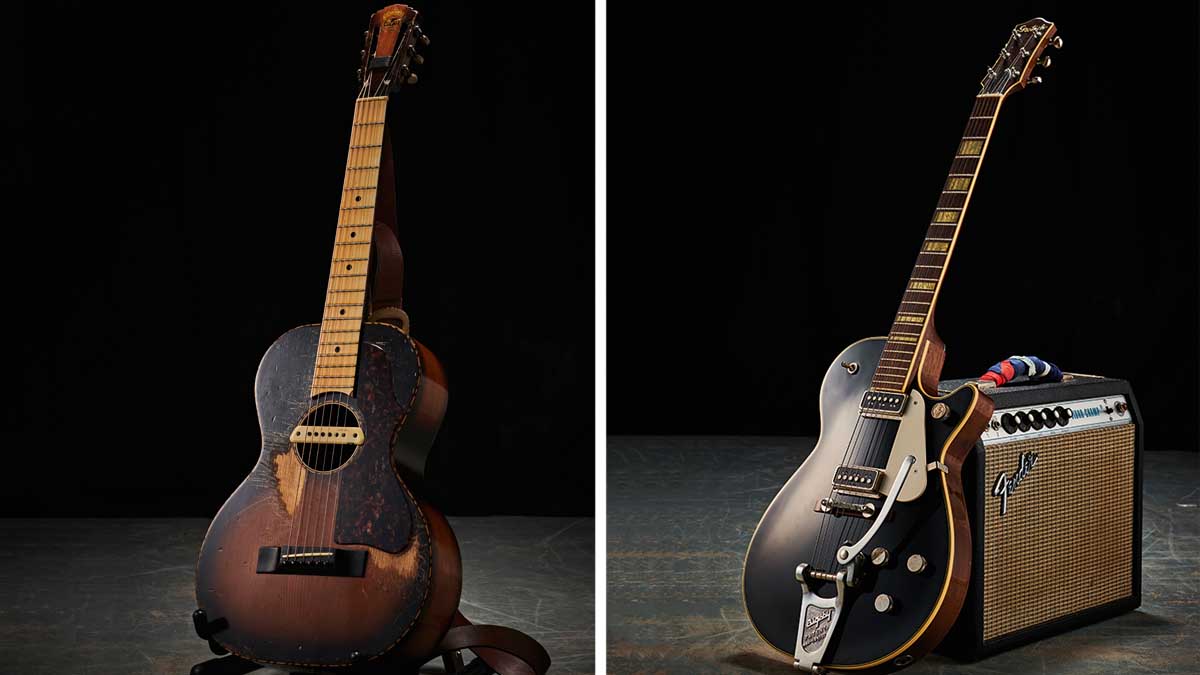
8. Calico Coming Down
“Calico Coming Down is another one of our favourites and was recorded on the little ratty Waialae acoustic. I like the sound, although to be honest, I would much rather have recorded it on a different acoustic. But it was all I had lying around at the time.
“The guitar and vocals were cut together on the second take and everything else was added afterwards. Which is nuts because it sounds like Ethan is in the room with us playing drums. It’s strange – I think us not being in the same room gives it a certain tentative quality. It’s in a really cool tuning… but it’s a secret because I’ve only written this one song in it and I want to do more!”
9. Learn To Love You Better
“This sounds like the poppiest tune on the record to me. I wrote this on the mandolinetto and put the sound through a Universal Audio Marshall amp-style plug-in, which you can hear near the end particularly. This is the first song that came out of that little thing. It also features a completely dry Telecaster going into the Magnatone amp for the electric stuff – my Candy Apple Red American Pro Tele.
“I was aiming for a kind of Stones/Keith Richards thing, and I was going for that kind of flat two-dimensional Faces guitar tone. For the rhythm we used a 1970s Korg SR-120 drum machine. In fact, there were no acoustic drums recorded for this song; the rhythms are all drum machines.”
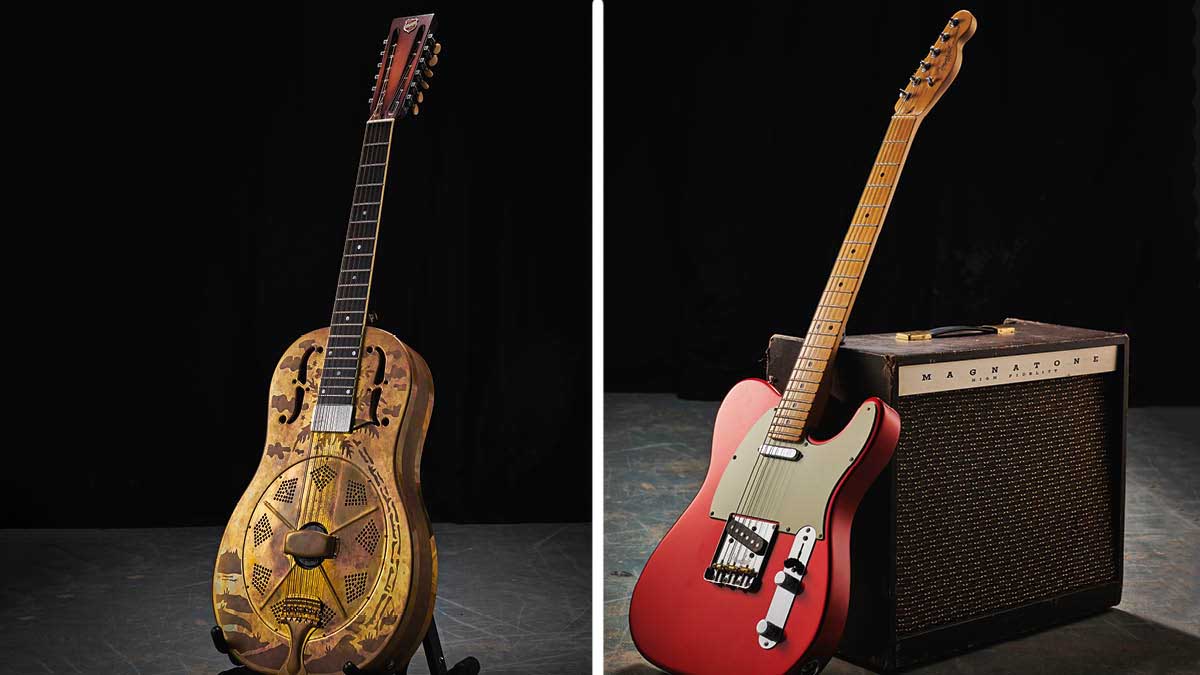
10. Long Gone & Heartworn
“This rhythm guitar sound is the Silvertone Speed Demon into the Magnatone and silverface Champ. I wanted it to sound like Wilco Johnson’s proto-punk Dr Feelgood guitar tone – like mod meets Chess Records. You’ll hear a sample at the beginning of a conversation I overheard when we were out on the road where these two girls are talking about buying a glow-in-the-dark Elvis.
“Anyway, it turned out the record playing in the background is in the same key as this song. Jake [Kiszka] from Greta Van Fleet wanted to orchestrate the solos with me on this track. He had his down on the second take and, like Marcus King, he picked the Duo Jet going into the Tweed Champ.”
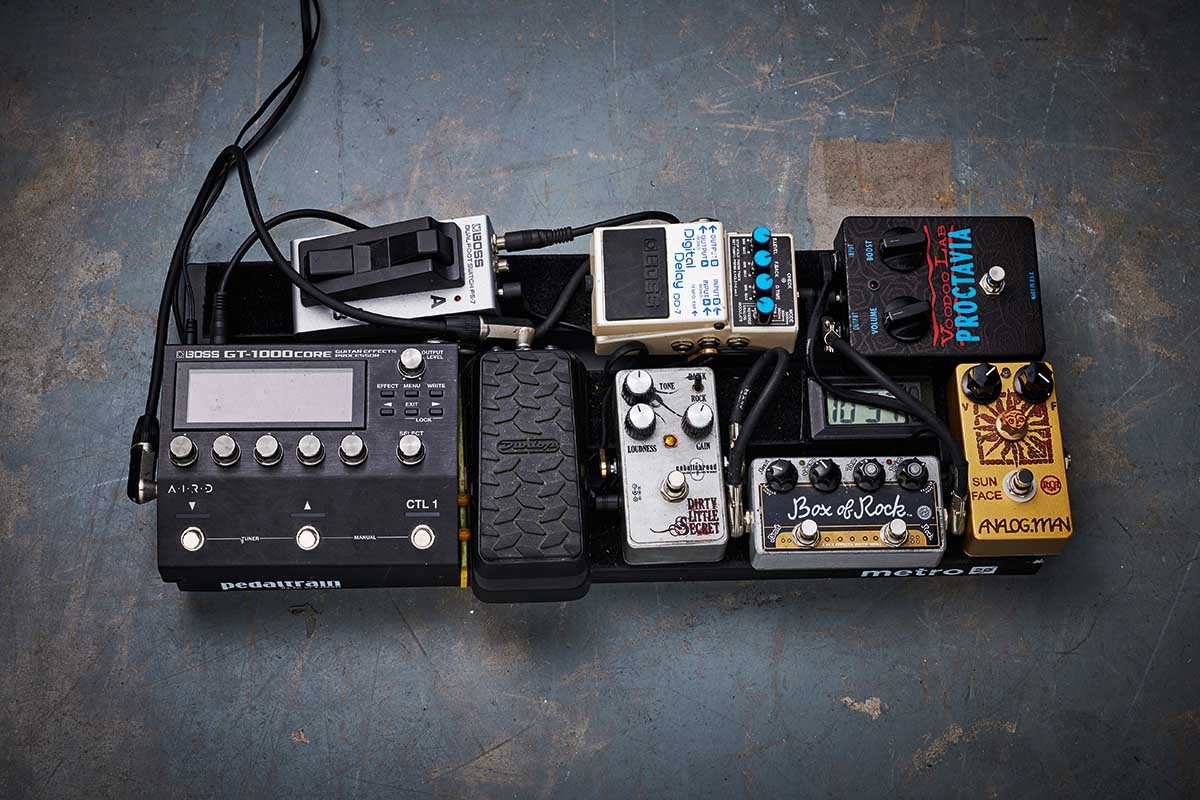
11. Mountain Lion Blues
“We changed up the mics for this because we couldn’t get it right to begin with. We have some old Stax-style Scully preamps, and we ran all the mics through those. I was using the Silvertone tuned down to open F and I got a really cool sound using the silverface Champ and Magnatone amps with an Analog Man Astro Tone Fuzz.
“I was trying to make it sound like a mountain lion. It’s maybe the coolest electric guitar tone on the album. The Astro Tone is such a great pedal; it’s fuzzy, but it’s got snap and sizzle and cuts through a mix. The big boomy kick drum sound is a 40-inch Slingerland we took out on the Greta tour with us.”
12. Sing A Hallelujah
“I used my Gretsch Vintage Select 6120 tuned to D standard straight into the 1960 Tweed Champ for this. I did it totally dry – it’s a very pure Gretsch Dynasonic tone – and the reverb was added during mixing. Nick used a Fender VI for the bass, and there are some nice atmospheric Juno synth pads in the mix.
“Dynasonics retain a lot of top-end clarity and have that bell-like chime. They seem to sing more than most other larger-style single coils like P-90s. But they’re also loud, and the way the bottom-end breaks up, especially with a Gretsch, is really cool. It makes for an incredibly dynamic pickup. You can go from completely clean to dirty Tweed-style overdrive with the right amp.”
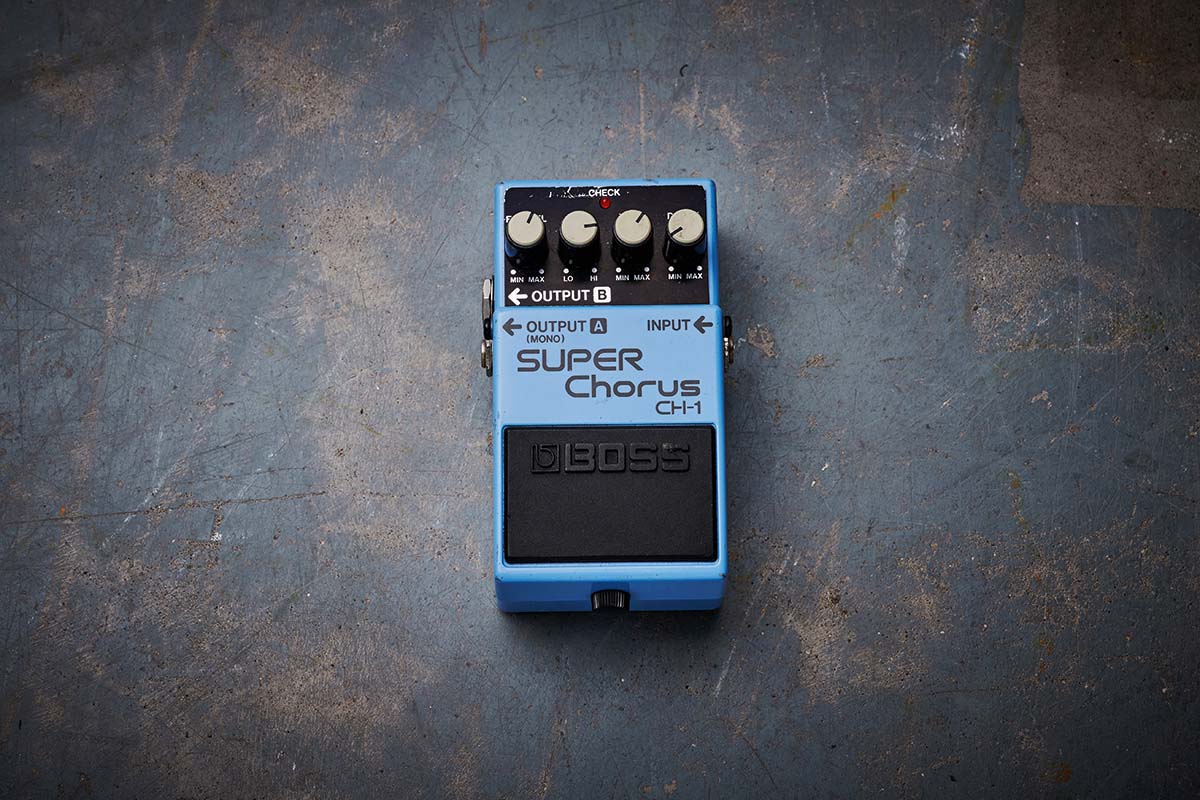
13. Has My Midnight Begun
“We used the Korg SR-120 again for rhythms on this track, and for the percussion in the chorus we used a tin of coffee beans as a shaker. I played the 12-string National and DI’d it via a Boss CH-1 Super Chorus, which enhances the guitar’s natural chorusing in a really cool way.
“The banjolele features here again, this time going through an Electro-Harmonix Russian Big Muff. It’s a weird clanky tone. We also used the Shimmer mode on a Boss RV-6 Reverb with a Casio synth to create a lush, spacey sound. Near the end there are some big reverb-y Gretsch 6120 chords, and the song ends with the resonator feeding back. I’m really proud of this one.”
- Click Click Domino, is out now on Vow Road/Thirty Tigers.
Rod Brakes is a music journalist with an expertise in guitars. Having spent many years at the coalface as a guitar dealer and tech, Rod's more recent work as a writer covering artists, industry pros and gear includes contributions for leading publications and websites such as Guitarist, Total Guitar, Guitar World, Guitar Player and MusicRadar in addition to specialist music books, blogs and social media. He is also a lifelong musician.








![John Mayer and Bob Weir [left] of Dead & Company photographed against a grey background. Mayer wears a blue overshirt and has his signature Silver Sky on his shoulder. Weir wears grey and a bolo tie.](https://cdn.mos.cms.futurecdn.net/C6niSAybzVCHoYcpJ8ZZgE.jpg)

![A black-and-white action shot of Sergeant Thunderhoof perform live: [from left] Mark Sayer, Dan Flitcroft, Jim Camp and Josh Gallop](https://cdn.mos.cms.futurecdn.net/am3UhJbsxAE239XRRZ8zC8.jpg)
